
Proposal for the declaration of the Žižkov Freight Station as a tangible cultural monument
The Club for Old Prague submitted this proposal to the Ministry of Culture of the Czech Republic on May 19, 2010 (slightly shortened):
Proposal for the declaration of the group of objects of the Freight Station Žižkov, Prague 3-Žižkov as a National Cultural Monument
Introduction:
The immediate impetus for this proposal was our recent discovery that as of today, no proceedings have been initiated regarding the proposal to declare the freight station Žižkov as a cultural monument, which was submitted by the National Heritage Institute in 2003. For this reason, we present this new proposal supplemented with facts that we consider relevant to demonstrate the essence that the freight station Žižkov is a collection that represents a significant evidence of "the historical development, way of life, and environment of society" as a manifestation of human creativity and work, which fulfills the conditions for declaration as a cultural monument due to its urbanistic, artistic, and technical qualities in the sense of § 2, paragraph 1, letter a) of Act No. 20/1987 Coll. as amended.
In the introduction, we would like to remind of the significance and place of this complex for Prague's industrial heritage, which has unfortunately suffered irreplaceable losses in the past decade due to extensive demolitions and construction in the cadastral area of the capital city (Ruston Engineering demolised in 2007, ČKD Libeň demolished in 2002, Praga Libeň demolished in 2002, etc.). As a result of rampant construction in previously industrial districts of the capital, their original identity is unnecessarily lost. The loss of interesting objects and genius loci often occurs only due to the choice of the cheapest solution, while the possibilities offered by proven examples of numerous conversions (new uses and sensitive reconstructions) in Western Europe are unfortunately used only minimally.
We believe that the group of buildings of the Žižkov freight station is a worthy representative of the qualities of functionalist industrial architecture, unmatched in Prague. Its preservation and integration into new developments in Žižkov will help this district retain its original industrial character. The Žižkov freight station, with new uses and in new urban contexts, can be a valuable complex for the modern developing district, potentially creating its new natural center. The practical possibilities for new use of the area, maintaining the buildings within the proposed scope, have been verified by an urban study (ing. arch. Jan Sedlák, 2005-2007), architectural studies (ing. arch. Jaroslav Šafer and ing. arch. Oldřich Hájek, 2006), and also numerous student works - at the AVU School of Architecture (2003), FA and FSv CTU (2006-2007), currently at the Faculty of Architecture and Planning TU Vienna.
Alongside considering the qualities described below, of which we briefly mention the uniqueness of the operational solution of the station, we would also like to point out that the current era is somewhat pivotal in changing the perception of the value of industrial objects. The shift in views of both experts and the broader public in the field of industrial heritage protection can be documented by the continuously evolving research and theoretical study, sponsored by the International Committee for the Conservation of Industrial Heritage TICCIH (cf. the Industrial Heritage Charter from 2003), the activities of the National Heritage Institute (Research task 8140 - Spatial and sector research of industrial heritage under the research plan of the Ministry of Culture of the Czech Republic MK07503233304), and the activities of specialized academic institutions (VCPD FA CTU). We believe that ignoring the phenomenon of changing perception of industrial heritage in cases of such coherent groups as Prague’s railway stations in general could lead to an irreversible loss comparable to the widespread demolition of Prague's Jewish town at the turn of the 19th and 20th centuries.
History of the Object:
The large-capacity terminal station served not only for the quick transshipment of goods, especially food, onto freight trucks, but also allowed for its short-term storage in refrigerated warehouses. The project of the tracks was worked on by ing. Miroslav Chlumecký (1890-1951), the author of the so-called Disposition Plan of future railway modifications in Prague. This was approved by the State Regulatory Commission in 1927, and the construction began that same year with the realization of the Malešice switch on the Libeň-upper station-Vršovice line. The building was designed in 1930 by the joint office of Dr. ing. Karel Caivas (1897-1976) and ing. arch. Vladimír Weiss (1897-1989), and executed by the firms of Karel Skorkovský, Bohumil Belady, and František Strnada, specializing in reinforced concrete constructions, while the steel constructions were supplied by ČKD, and the elevators were provided by the Vinohrady firm Jan Prokopec. The construction of warehouses and ramps began in 1931, the administrative building in 1934, and regular operations started on March 1, 1936.
Description of the Object:
Typologically, the building is a combination of a hall-type freight station and multi-story warehouses. The operational building (parc. no. 4481/1) has two four-wing sections with two stories and two basements, the ground floor is lined with covered internal wagon and outer truck ramps. Their reinforced concrete skeleton has mushroom ceilings designed for a load capacity of 2000 kg/m². The wings consist of modules of seven fields, connected by half-fields with glass facades. The northern wing, for goods exported from Prague, has six of these modules, while the larger southern wing, for incoming goods, has eight, reaching a length of over 350 m. Station operations occurred in both directions through two vertically separated branches, one operated by the railways, and the other by private carriers. The railways handled goods from the wagons through the internal ramps on the ground floor of the warehouses to external ramps - in the southern wing, in the opposite direction in the northern wing. The ramp in the middle of the rail yard served the carriers, where ten steel elevator towers stand, connected by walkways to the upper two floors of both wings of the warehouses, which were leased to the carriers, as were their basements. These spaces were served by elevators in half-fields, connecting to transverse tunnels under the buildings and rail yard, leading around the perimeter of the complex. The administrative building (parc. no. 4481/1) - a two-story five- to six-winged structure - is oriented perpendicular to the operational wings and parallel to Jana Želivského street, featuring a forward façade decorated with a chamfer. The complex is complemented by two symmetrically located gatehouses (both standing on parc. no. 4450/1) in front of the main building, with a standalone water tower (parc. no. 4476) located behind the right one. All buildings stylistically belong to the modest line of interwar functionalism.
Construction Technical Condition:
The well-executed reinforced concrete and steel constructions are still in good technical condition, and numerous technical and architectural details of the building have been preserved.
Justification of the Proposal:
The Žižkov freight station is uniquely characterized by its operational solution (see lit. II, pp. 4-5) and today represents the largest and best-preserved functionalist industrial building in Prague. Due to the state and arrangement of the building, one can expect its new use without disrupting its material essence and with a clearly readable original function.
The significance of the Freight Station is also evidenced by the attention it receives in expert literature (see Literature). It can be expected that this value will continue to rise.
Given the above-mentioned facts, we are convinced that the defined group of objects meets the values required by § 2 paragraph 1 letter a) of the Act on State Heritage Care for it to be declared a cultural monument by the Ministry of Culture. In case of doubts and uncertainties, we are ready to provide additional information that may be relevant for the decision.
Sources:
Archives of the Czech Railways, Prague-Libeň.
Literature:
I) Freight Station Žižkov. Its Creation and Arrangement, Prague 1935.
II) New Freight Station in Žižkov. Special print - Safe travels. Propaganda monthly of the Czechoslovak State Railways, exclusive official propaganda magazine of the administration of state railways in Prague. 1936.
III) Arnošt Katz, Freight Station Prague-Žižkov, Prague 1937.
IV) Stanislav Bechyně, Concrete Construction, ČMT Prague 1938, p. 6.
V) Vladimír Šlapeta, Prague 1900-1978. Prague 1978, p. 48.
VI) Rostislav Švácha, From Modernism to Functionalism, Prague 1985, p. 510.
VII) Jan Jakub Outrata, Freight Station Žižkov, in: Hana Hlušičková (ed.), Technical Monuments in Bohemia, Moravia, and Silesia, Vol. III (P-S), Prague 2003, p. 233.
VIII) Lukáš Beran - Vladislava Valchářová (eds.), Prague Industrial. Technical Buildings and Industrial Architecture of Prague, VCPD, Prague 2005, p. 115.
IX) Petr Vorlík (ed.), Second Wind of Industrial Architecture. Exhibition catalog, CTU, Prague 2007.
X) Lukáš Beran - Vladislava Valchářová, Industrial Prague 3. Technical Buildings and Industrial Architecture, VCPD CTU, Prague 2009, pp. 36-39.
XI) Lukáš Beran, Freight Station Žižkov, For Old Prague XXXVIII (IX), no. 3, 2008, pp. 48-51.
XII) Benjamin Fragner - Jan Zikmund (eds.), What We Demolished, VCPD CTU, Prague 2009, p. 126.
XIII) Entry V000242 - Freight Station Žižkov (Vladislava Valchářová - Lukáš Beran), in: Registry of Building Works - CTU in Prague, https://registr.cvut.cz/rsd/index.php (2010).
Authorization of the Proposal:
Prepared by: Mgr. Lukáš Beran (VCPD FA CTU), Mgr. Michal Novotný (member of the Domestic Council of the Club for Old Prague)
Photodocumentation: L. Beran, Z. Lefan
Prague, May 18, 2010
Proposal for the declaration of the group of objects of the Freight Station Žižkov, Prague 3-Žižkov as a National Cultural Monument
Introduction:
The immediate impetus for this proposal was our recent discovery that as of today, no proceedings have been initiated regarding the proposal to declare the freight station Žižkov as a cultural monument, which was submitted by the National Heritage Institute in 2003. For this reason, we present this new proposal supplemented with facts that we consider relevant to demonstrate the essence that the freight station Žižkov is a collection that represents a significant evidence of "the historical development, way of life, and environment of society" as a manifestation of human creativity and work, which fulfills the conditions for declaration as a cultural monument due to its urbanistic, artistic, and technical qualities in the sense of § 2, paragraph 1, letter a) of Act No. 20/1987 Coll. as amended.
In the introduction, we would like to remind of the significance and place of this complex for Prague's industrial heritage, which has unfortunately suffered irreplaceable losses in the past decade due to extensive demolitions and construction in the cadastral area of the capital city (Ruston Engineering demolised in 2007, ČKD Libeň demolished in 2002, Praga Libeň demolished in 2002, etc.). As a result of rampant construction in previously industrial districts of the capital, their original identity is unnecessarily lost. The loss of interesting objects and genius loci often occurs only due to the choice of the cheapest solution, while the possibilities offered by proven examples of numerous conversions (new uses and sensitive reconstructions) in Western Europe are unfortunately used only minimally.
We believe that the group of buildings of the Žižkov freight station is a worthy representative of the qualities of functionalist industrial architecture, unmatched in Prague. Its preservation and integration into new developments in Žižkov will help this district retain its original industrial character. The Žižkov freight station, with new uses and in new urban contexts, can be a valuable complex for the modern developing district, potentially creating its new natural center. The practical possibilities for new use of the area, maintaining the buildings within the proposed scope, have been verified by an urban study (ing. arch. Jan Sedlák, 2005-2007), architectural studies (ing. arch. Jaroslav Šafer and ing. arch. Oldřich Hájek, 2006), and also numerous student works - at the AVU School of Architecture (2003), FA and FSv CTU (2006-2007), currently at the Faculty of Architecture and Planning TU Vienna.
Alongside considering the qualities described below, of which we briefly mention the uniqueness of the operational solution of the station, we would also like to point out that the current era is somewhat pivotal in changing the perception of the value of industrial objects. The shift in views of both experts and the broader public in the field of industrial heritage protection can be documented by the continuously evolving research and theoretical study, sponsored by the International Committee for the Conservation of Industrial Heritage TICCIH (cf. the Industrial Heritage Charter from 2003), the activities of the National Heritage Institute (Research task 8140 - Spatial and sector research of industrial heritage under the research plan of the Ministry of Culture of the Czech Republic MK07503233304), and the activities of specialized academic institutions (VCPD FA CTU). We believe that ignoring the phenomenon of changing perception of industrial heritage in cases of such coherent groups as Prague’s railway stations in general could lead to an irreversible loss comparable to the widespread demolition of Prague's Jewish town at the turn of the 19th and 20th centuries.
History of the Object:
The large-capacity terminal station served not only for the quick transshipment of goods, especially food, onto freight trucks, but also allowed for its short-term storage in refrigerated warehouses. The project of the tracks was worked on by ing. Miroslav Chlumecký (1890-1951), the author of the so-called Disposition Plan of future railway modifications in Prague. This was approved by the State Regulatory Commission in 1927, and the construction began that same year with the realization of the Malešice switch on the Libeň-upper station-Vršovice line. The building was designed in 1930 by the joint office of Dr. ing. Karel Caivas (1897-1976) and ing. arch. Vladimír Weiss (1897-1989), and executed by the firms of Karel Skorkovský, Bohumil Belady, and František Strnada, specializing in reinforced concrete constructions, while the steel constructions were supplied by ČKD, and the elevators were provided by the Vinohrady firm Jan Prokopec. The construction of warehouses and ramps began in 1931, the administrative building in 1934, and regular operations started on March 1, 1936.
Description of the Object:
Typologically, the building is a combination of a hall-type freight station and multi-story warehouses. The operational building (parc. no. 4481/1) has two four-wing sections with two stories and two basements, the ground floor is lined with covered internal wagon and outer truck ramps. Their reinforced concrete skeleton has mushroom ceilings designed for a load capacity of 2000 kg/m². The wings consist of modules of seven fields, connected by half-fields with glass facades. The northern wing, for goods exported from Prague, has six of these modules, while the larger southern wing, for incoming goods, has eight, reaching a length of over 350 m. Station operations occurred in both directions through two vertically separated branches, one operated by the railways, and the other by private carriers. The railways handled goods from the wagons through the internal ramps on the ground floor of the warehouses to external ramps - in the southern wing, in the opposite direction in the northern wing. The ramp in the middle of the rail yard served the carriers, where ten steel elevator towers stand, connected by walkways to the upper two floors of both wings of the warehouses, which were leased to the carriers, as were their basements. These spaces were served by elevators in half-fields, connecting to transverse tunnels under the buildings and rail yard, leading around the perimeter of the complex. The administrative building (parc. no. 4481/1) - a two-story five- to six-winged structure - is oriented perpendicular to the operational wings and parallel to Jana Želivského street, featuring a forward façade decorated with a chamfer. The complex is complemented by two symmetrically located gatehouses (both standing on parc. no. 4450/1) in front of the main building, with a standalone water tower (parc. no. 4476) located behind the right one. All buildings stylistically belong to the modest line of interwar functionalism.
Construction Technical Condition:
The well-executed reinforced concrete and steel constructions are still in good technical condition, and numerous technical and architectural details of the building have been preserved.
Justification of the Proposal:
The Žižkov freight station is uniquely characterized by its operational solution (see lit. II, pp. 4-5) and today represents the largest and best-preserved functionalist industrial building in Prague. Due to the state and arrangement of the building, one can expect its new use without disrupting its material essence and with a clearly readable original function.
The significance of the Freight Station is also evidenced by the attention it receives in expert literature (see Literature). It can be expected that this value will continue to rise.
Given the above-mentioned facts, we are convinced that the defined group of objects meets the values required by § 2 paragraph 1 letter a) of the Act on State Heritage Care for it to be declared a cultural monument by the Ministry of Culture. In case of doubts and uncertainties, we are ready to provide additional information that may be relevant for the decision.
Sources:
Archives of the Czech Railways, Prague-Libeň.
Literature:
I) Freight Station Žižkov. Its Creation and Arrangement, Prague 1935.
II) New Freight Station in Žižkov. Special print - Safe travels. Propaganda monthly of the Czechoslovak State Railways, exclusive official propaganda magazine of the administration of state railways in Prague. 1936.
III) Arnošt Katz, Freight Station Prague-Žižkov, Prague 1937.
IV) Stanislav Bechyně, Concrete Construction, ČMT Prague 1938, p. 6.
V) Vladimír Šlapeta, Prague 1900-1978. Prague 1978, p. 48.
VI) Rostislav Švácha, From Modernism to Functionalism, Prague 1985, p. 510.
VII) Jan Jakub Outrata, Freight Station Žižkov, in: Hana Hlušičková (ed.), Technical Monuments in Bohemia, Moravia, and Silesia, Vol. III (P-S), Prague 2003, p. 233.
VIII) Lukáš Beran - Vladislava Valchářová (eds.), Prague Industrial. Technical Buildings and Industrial Architecture of Prague, VCPD, Prague 2005, p. 115.
IX) Petr Vorlík (ed.), Second Wind of Industrial Architecture. Exhibition catalog, CTU, Prague 2007.
X) Lukáš Beran - Vladislava Valchářová, Industrial Prague 3. Technical Buildings and Industrial Architecture, VCPD CTU, Prague 2009, pp. 36-39.
XI) Lukáš Beran, Freight Station Žižkov, For Old Prague XXXVIII (IX), no. 3, 2008, pp. 48-51.
XII) Benjamin Fragner - Jan Zikmund (eds.), What We Demolished, VCPD CTU, Prague 2009, p. 126.
XIII) Entry V000242 - Freight Station Žižkov (Vladislava Valchářová - Lukáš Beran), in: Registry of Building Works - CTU in Prague, https://registr.cvut.cz/rsd/index.php (2010).
Authorization of the Proposal:
Prepared by: Mgr. Lukáš Beran (VCPD FA CTU), Mgr. Michal Novotný (member of the Domestic Council of the Club for Old Prague)
Photodocumentation: L. Beran, Z. Lefan
Prague, May 18, 2010
The English translation is powered by AI tool. Switch to Czech to view the original text source.
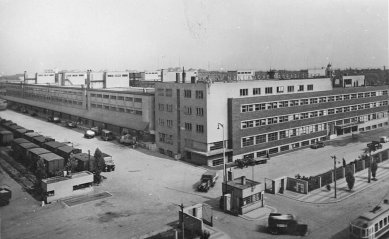
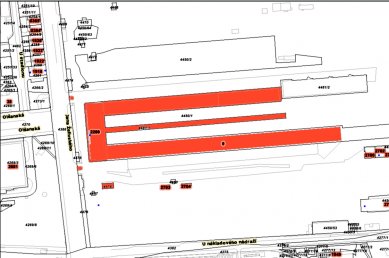

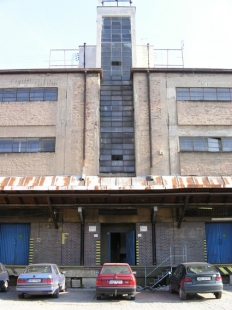

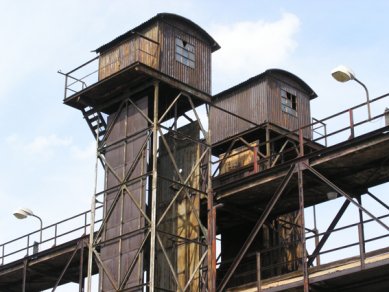
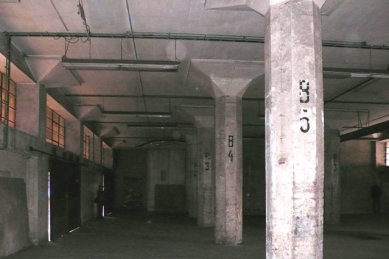
Related articles
0
15.02.2022 | Praha 3 plans to build apartments near the Žižkov Freight Railway Station
0
28.01.2022 | From the developers of the Žižkov freight station, Prague will receive 1.53 billion CZK
0
21.09.2021 | Prague is finalizing contracts with developers regarding the Zizkov Freight Station
0
30.08.2019 | New Žižkov Center - Invitation to Debate
0
18.10.2016 | Praha is preparing an urban planning competition for the redevelopment of the train station in Žižkov
0
16.02.2016 | The form of the Žižkov Freight Station will be determined by an architectural competition
0
13.02.2016 | Nádraží Žižkov is still waiting for its use, Prague 3 will announce a competition
0
03.02.2016 | The decision on the competition for the Žižkov train station will be made by Prague 3 in mid-February
0
04.12.2015 | Ministerstvo kultury will again address the construction at the Žižkov railway station
0
14.10.2015 | The appearance of the station in Žižkov should arise from an architectural competition
1
01.08.2015 | Hujová: The future of the Žižkov railway station is still unclear
0
08.07.2015 | The reconstruction of the Žižkov railway station would cost two billion
0
04.05.2015 | Mayor: The State Print Works is interested in the Žižkov train station
0
08.09.2014 | The Ministry of Culture will again discuss the construction near the Žižkov railway station
0
25.07.2014 | Dog walk at the Žižkov Freight Station this Saturday!
2
22.11.2013 | Developer received a zoning decision for the construction near the station in Žižkov
0
01.11.2013 | Analysis will indicate the possibilities for the reconstruction and use of the Žižkov train station
0
11.03.2013 | Žižkov Station has been officially declared a cultural monument
0
30.11.2012 | The ministry has declared the Žižkov station a cultural monument for the third time
4
27.03.2012 | The reconstruction of the freight station Žižkov would cost 5 billion.
0
14.03.2012 | The owner of the Žižkov station disagrees with heritage protection for the second time
0
08.03.2012 | The Žižkov freight station is once again a cultural monument
1
25.05.2011 | Heritage protectors will重新检查 the protection of the station in Žižkov
0
28.02.2011 | Civil Association for the Preservation of the Žižkov Freight Station
0
17.02.2011 | MK has not yet decided on the Žižkov Freight Station
0
08.02.2011 | A petition has been created for the declaration of the Žižkov railway station as a monument.
26
04.01.2011 | MK declared part of the Žižkov Freight Station a monument
1
09.06.2010 | Ministerstvo decides whether the station in Žižkov will be a monument










